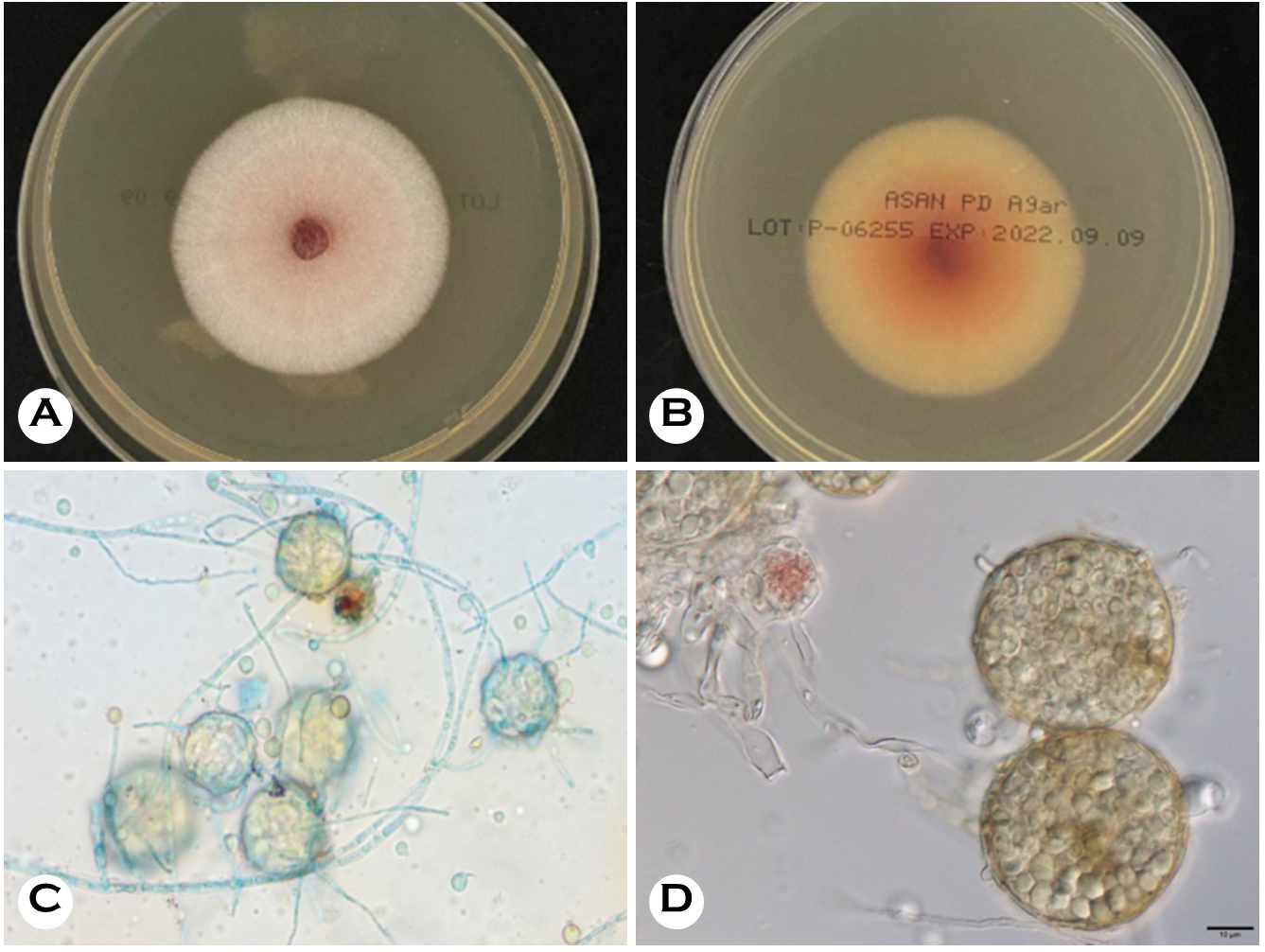pISSN : 3058-423X eISSN: 3058-4302
Open Access, Peer-reviewed

pISSN : 3058-423X eISSN: 3058-4302
Open Access, Peer-reviewed
Jayoung Kim,Gi-Ho Sung,Junsang Oh,and Soo-Young Kim
10.17966/JMI.2023.28.4.121 Epub 2024 January 05
Abstract
Keywords
Cleistothecia Monascus ruber Natural pigments
Monascus ruber (anamorph: Basipetospora rubra) is a filamentous Ascomycetous fungus (family: Monascaceae; order:Eurotiales) isolated from fermented foods and grain. In Asia, it is traditionally used to produce Monascus-fermented rice. It is commonly used as a natural food colorant (yellow-, orange-, and red-colored pigments), flavoring agent, and preservative for fish and meat1. Until recently, only a few cases of M. ruber infection have been reported in elderly patients. These cases included invasive gastric infection post-consumption of contaminated dried and salted fish, renal infection post-surgery, and onychomycosis in diabetic indi- viduals from French Guiana, India, and Morocco. Onycho- mycosis was successfully treated orally with terbinafine, but treatment for gastric infection with liposomal amphotericin B resulted in nephrotoxicity despite normal renal function at admission2,3.
Recently, M. ruber was isolated from a patient with chronic otitis media from Korea3. The 69-year-old male patient pre- sented to the Otolaryngology Department, suffering from right-sided otorrhea for 1 year and reduced hearing for 7 years. Tympanoscopy of the right ear showed a near-perforation of the tympanic membrane with purulent discharge and fungal hyphae. A swab specimen from the discharge was cultured using Sabouraud's dextrose agar supplemented with chloramphenicol. After 7 days of incubation at 25℃, a flat, spreading mold with a thinly floccose texture and white to reddish color was evident (Figs. 1A, 1B). Microscopic examin- ation revealed numerous round and thin-walled cleistothecia containing oval ascospores with smooth walls in lactophenol blue staining (Fig. 1C) and wet staining (Fig. 1D). The result of MALDI-TOF MS using tube extraction method showed no identification. The fungus was identified as M. ruber (syno- nym M. pilosus) through a polyphasic approach combining morphological characters and sequencing of the internal transcribed spacer regions, large subunit ribosomal ribonucleic acid, β-tubulin, and calmodulin encoding-genes. Endoscopic trans-canal myringoplasty was successfully performed on the patient, followed by a 6-week oral treatment with fluconazole.

References
1. Wang TH, Lin TF. Monascus rice products. Adv Food Nutr Res 2007;53:123-159
Google Scholar
2. Bouksir K, Kazzaz M, Fassi Fehri H, Bouziane H, Bouksir H, El Haskouri F. Monascus ruber: A new of onychomycosis in the north of Morocco (Tetouan). J Mycol Med 2018; 28:502-509
3. Iriart X, Fior A, Blanchet D, Berry A, Neron P, Aznar C. Monascus ruber: invasive gastric infection caused by dried and salted fish consumption. J Clin Microbiol 2010; 48:3800-3802
Google Scholar
Congratulatory MessageClick here!